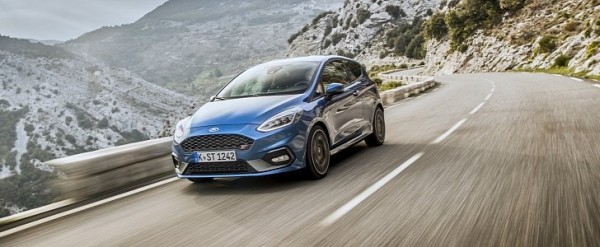
That’s 4.9 and 4.7 liters per 100 kilometers, and it’s somewhat curious that the Fiesta is not as fuel-efficient as the Focus. Using the electrical energy stored in the lithium-ion battery, the BISG delivers additional torque during normal driving and acceleration. Needless to say, the electrical ancillaries also utilize the mild-hybrid system’s battery pack.
“Our 1.0 EcoBoost has already proven that fuel efficiency and performance can go hand-in-hand. Our EcoBoost Hybrid technology takes that to the next level,” declared Roelant de Waard, vice president of Marketing, Sales & Service in Europe. “We believe customers are going to love the smooth and urgent power delivery of our EcoBoost Hybrid powertrains just as much as they’ll enjoy less-frequent trips to the fuel pumps.”
Mild-hybrid powertrain solutions will be introduced to the Transit two-tonne and Transit Custom vans, as well as the Tourneo Custom with seating for eight or nine people. The Mondeo Hybrid wagon, on the other hand, is the only full-hybrid with this body style in the large family car segment.
Although the Blue Oval markets the technology as Ford Hybrid, remember what Roelant said a few paragraphs before? “EcoBoost Hybrid” is the nomenclature he used, and we’re finding hard to pinpoint the correct variation. As in the nomenclature that customers will find on the trunk lid in the form of a badge.
“We’ve gone to every length to develop mild-hybrid powertrains for two of our most popular cars that will help keep cash in customers’ pockets while remaining true to the Ford ‘fun to drive’ philosophy,” added Steven Armstrong, group vice president and president of Ford in Europe, Middle East, and Africa.
Remember the rumor according to which the Focus RS would go mild-hybrid with 400 ponies? Not that far-fetched after all, isn't it?








